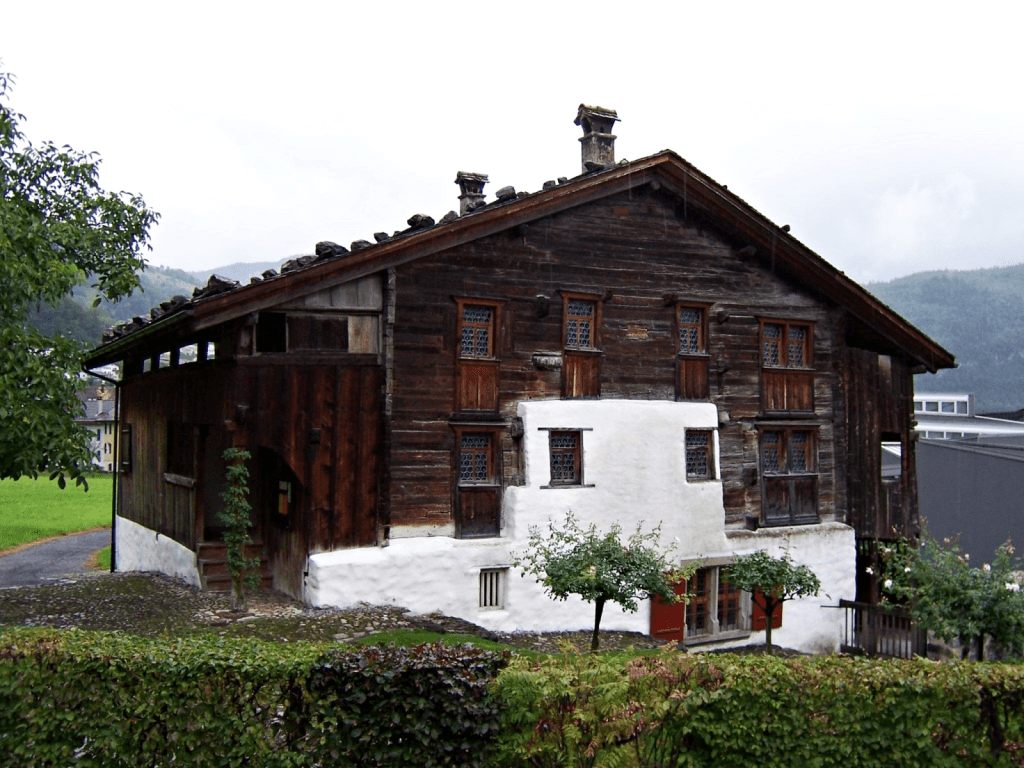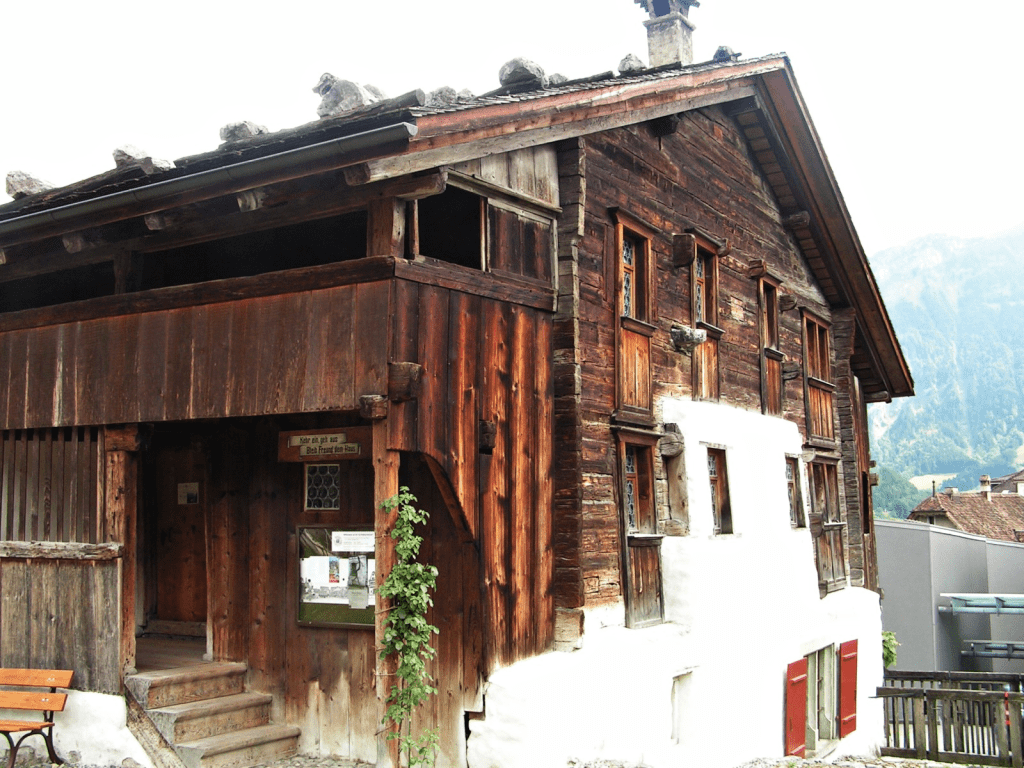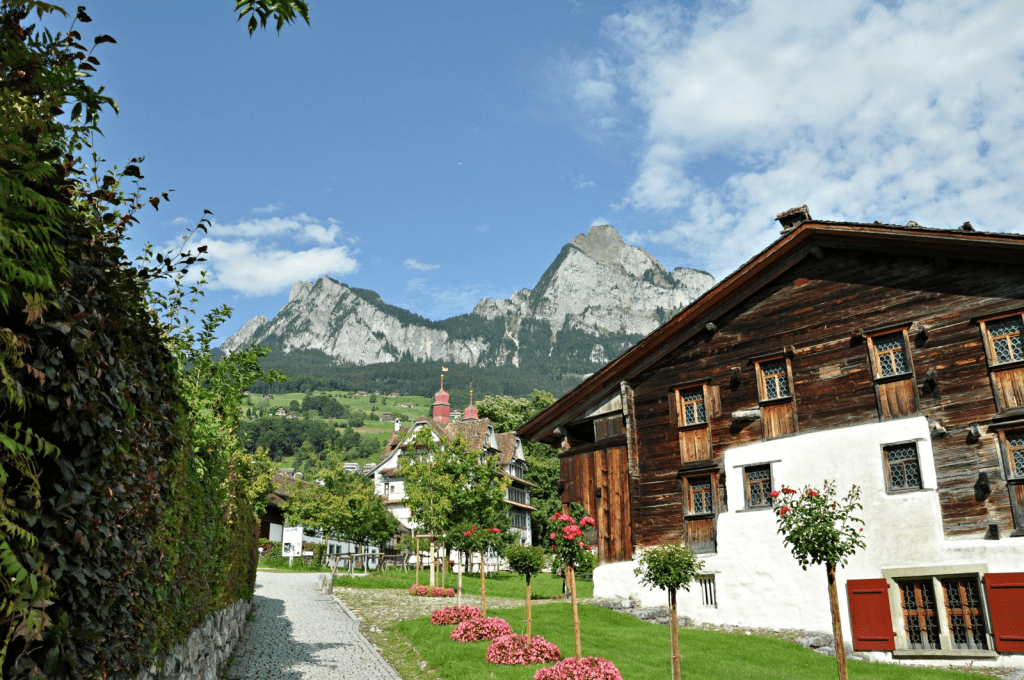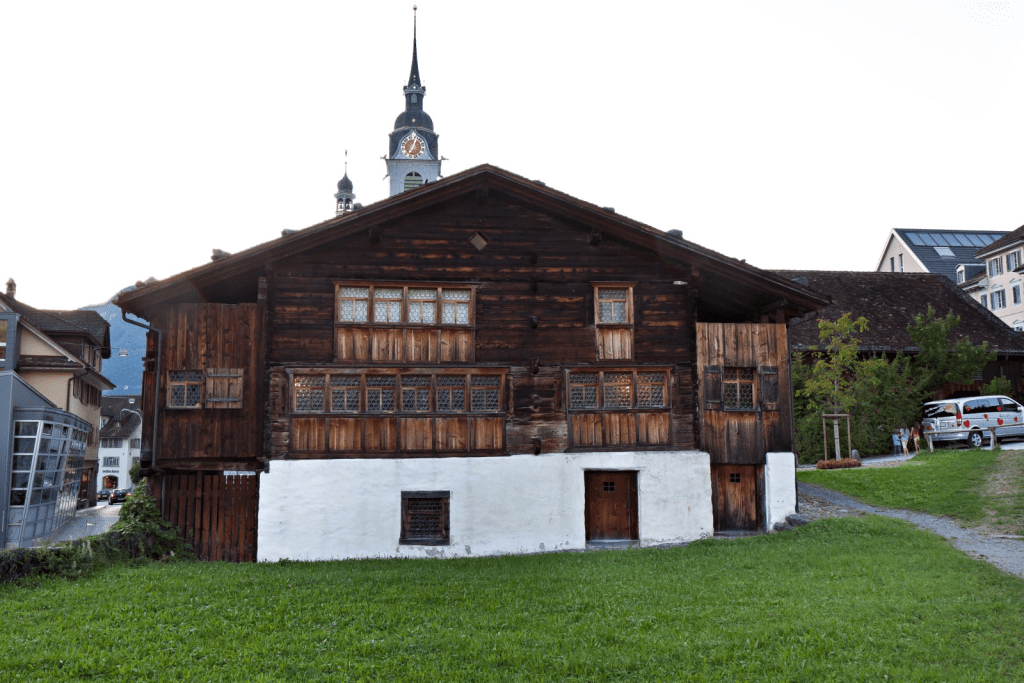Nestled in the scenic village of Schwyz, Switzerland, stands a remarkable relic of medieval architecture the House of Bethlehem. Built in 1287, this wooden structure is widely considered the oldest surviving timber home in all of Europe. Despite centuries of harsh winters, wars, and even a devastating village fire, this house remains a stunning example of enduring craftsmanship and cultural preservation.
To walk past the House of Bethlehem is to take a step back into a time when homes were carved by hand and built to last for generations. The fact that it still stands today is a testament not only to Swiss ingenuity but also to a deep respect for history.

The Origins of a Medieval Marvel
The House of Bethlehem was constructed over seven centuries ago during a time when timber-frame houses were the norm in alpine villages. In 1287, homes were built from locally sourced wood, using simple tools and traditional joinery methods passed down through generations.
Although historical records are limited, dendrochronology the science of dating wood using tree-ring analysis confirmed that the timber used in the house dates back to the 13th century. This scientific validation gives the home a unique place in architectural history. It’s not just a legend passed down through word of mouth it’s a verified medieval structure that has survived the test of time.

Survival Through Fire and Time
One of the most incredible chapters in the story of the House of Bethlehem came in the 17th century when much of Schwyz was engulfed in a massive village fire. While countless other homes were reduced to ash, this modest wooden structure somehow endured. Whether by luck or by its remote location within the village, it escaped destruction and carried its legacy into the modern age.
Video:
How Did This Wooden House Last Over 700 Years?
The survival of this home is no accident. The builders of the time employed techniques that, while rudimentary by today’s standards, focused on durability. Interlocking beams, natural insulation, and tight structural design gave the building the strength to withstand centuries of environmental wear and even potential disaster.
A Rare Example of Living History
Today, there are only about a dozen ancient timber homes left in the Schwyz region. Most have been lost to modernization, environmental decay, or neglect. The House of Bethlehem is a rare exception. Instead of being torn down or forgotten, it has been preserved and converted into a museum exhibit for future generations to explore.
Visitors can now step inside and experience what daily life might have felt like in medieval Switzerland. From the low ceilings to the hand-hewn beams, every part of the home tells a story of resilience and tradition. Artifacts, historical documents, and architectural details on display help paint a vivid picture of life in the Alps over 700 years ago.

Craftsmanship That Stands the Test of Time
The House of Bethlehem isn’t just a tourist attraction; it’s a masterclass in traditional building techniques. The quality of the timberwork, the way the beams are joined without nails, and the use of natural materials for insulation are all examples of early sustainable design.
Video:
TOP 10 OLDEST HOUSES in the World I Amazing World of Architecture
Long before the modern movement toward eco-friendly architecture, Swiss builders were creating homes that were both efficient and long-lasting. They worked with the landscape rather than against it, using locally available resources in a way that minimized waste and maximized stability.
It’s no surprise that modern architects and historians alike study the House of Bethlehem to understand how such structures were built and why they have endured when so many others have not.
A Symbol of Cultural Pride and Heritage
For the people of Schwyz, the House of Bethlehem is more than just an old building. It’s a cultural landmark and a source of local pride. Its preservation reflects a broader Swiss commitment to honoring the past while educating future generations.
This home has survived wars, weather, and the relentless march of time. Today, it represents a bridge between the medieval world and the modern one a living symbol of what’s possible when quality meets care and tradition is respected rather than discarded.

Conclusion: A Legacy in Wood
The House of Bethlehem stands quietly in the Swiss village of Schwyz, but its story speaks volumes. Built in 1287 with nothing more than timber, hand tools, and human skill, this humble home has defied centuries of change.
As one of Europe’s oldest wooden structures, it offers more than just a look into the past. It inspires us to build with purpose, to value craftsmanship, and to protect the legacies we inherit. Whether you’re an architect, a historian, or simply someone who loves stories from long ago, the House of Bethlehem is a place where the past lives on one wooden beam at a time.


